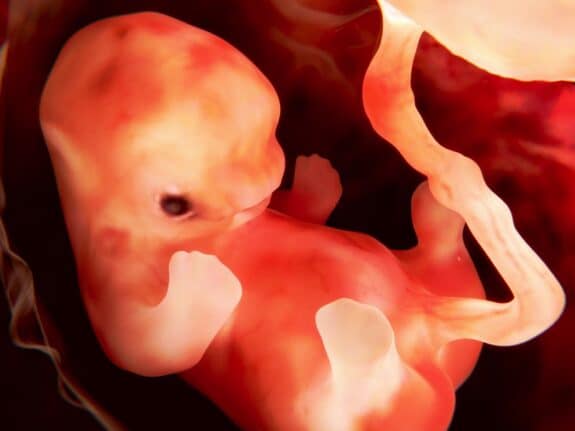In today’s world, synthetic chemicals have become an unavoidable part of daily life. From household products to food containers, these chemicals are present everywhere, and unfortunately, they’re not always safe. For expecting parents or those raising children, understanding the impact of these substances is crucial, as exposure can have long-term effects on the health and development of children.
The Growing Problem of Chemical Pollution
Synthetic chemicals are now considered one of the greatest threats to children’s development worldwide. While these substances have brought technological and material advances, they also come with hidden dangers. Chemical pollution, largely driven by man-made substances, affects every stage of a child’s life—from the prenatal period through adulthood. The United Nations has even recognized access to a clean environment as a human right, showing how critical this issue has become.
Here’s the shocking part: out of the millions of chemicals produced, only a small percentage have undergone thorough safety testing. This leaves us exposed to potentially harmful substances in everyday items like plastics, cleaning products, and even personal care items. And while some harmful chemicals, like lead, have been banned or restricted, many are still in use or have been replaced with alternatives that could be just as dangerous.
Why Are Kids More Vulnerable?
Children, especially during fetal development and early childhood, are more sensitive to these chemicals than adults. During pregnancy, even small amounts of exposure to toxic chemicals can disrupt fetal development, affecting how organs and tissues form. For instance, chemicals that don’t harm adults can have significant effects on a developing fetus because organs like the brain and lungs are rapidly growing and forming.
Moreover, children’s smaller body sizes, higher food intake relative to their size, and behaviors like putting objects in their mouths make them more vulnerable to absorbing higher concentrations of harmful substances.
The Biggest Culprits: Modern Pollutants
Some of the worst offenders in terms of chemicals that can harm children’s development include:
- Flame Retardants (PFAS, PBDEs, and OPFRs): These are used in furniture, electronics, and baby products to reduce the risk of fire. Unfortunately, they’ve been linked to neurodevelopmental issues, including reduced IQ and hyperactivity. Many companies are phasing them out, but they still exist in some waterproof products and non-stick cookware.
- Phthalates and Bisphenols (BPA, BPS, BPF): Found in plastics, personal care products, and food packaging, these chemicals can disrupt hormones and affect brain development. Phthalates are also linked to childhood obesity and behavior issues.
- Pesticides: Chemicals like organophosphate pesticides, commonly used in agriculture, have been associated with lower cognitive scores and higher rates of attention-deficit/hyperactivity disorder (ADHD) in children.
Additionally, metals like lead, cadmium, mercury, and arsenic are highly toxic, especially to children, as they can severely impact development. Here’s how each metal poses risks:
- Lead: Exposure to lead, even in small amounts, can affect children’s brain development, leading to learning disabilities, lower IQ, attention disorders, and behavioral issues. It can also impact physical growth.
- Cadmium: Chronic exposure to cadmium can impair cognitive function and negatively affect bone development in children. It’s known to cause kidney damage and may lead to developmental delays.
- Mercury: Mercury, particularly in its organic form (methylmercury), can cause significant harm to the developing brain and nervous system. It can result in learning disabilities, motor skill impairments, and speech delays in children.
- Arsenic: Long-term exposure to arsenic, particularly through contaminated drinking water or food, can hinder cognitive development, increase the risk of cancers, and contribute to heart and lung problems later in life.
These toxic metals can be found in some household products, toys, or even in certain foods, underscoring the importance of monitoring exposure.
How Chemical Exposure Happens
During pregnancy, many harmful chemicals can cross the placenta, exposing the fetus to dangerous substances. For instance, research has shown that chemicals like bisphenols and phthalates can accumulate in the placenta, impacting its ability to support healthy fetal growth.
Post-birth, children can be exposed to these chemicals through household products, contaminated food, air, and water. Studies show that even seemingly harmless actions, like using certain cleaning products or storing food in plastic containers, can introduce harmful chemicals into their bodies.
The Consequences for Children’s Health
So, what does all this exposure mean for kids? Unfortunately, the effects are wide-ranging and often long-lasting. Here are some key areas where chemical exposure has been found to have the most significant impact:
- Neurodevelopmental Issues: Research has linked exposure to certain chemicals with developmental delays, learning disabilities, behavioral problems, and even lower IQ scores. For example, children exposed to high levels of flame retardants during pregnancy have been shown to have lower cognitive abilities and increased hyperactivity by the time they reach school age.
- Metabolic Disorders: Chemicals like phthalates and bisphenols are often called “obesogens” because they disrupt normal hormone function and increase the risk of obesity in children. Studies show that children exposed to these chemicals in utero or during childhood are more likely to develop obesity or related conditions like diabetes.
- Pregnancy Complications: Pregnant women exposed to these chemicals may face a higher risk of complications like gestational diabetes and preeclampsia, both of which can have long-term effects on both the mother and child.
- Growth Problems: Some chemicals, especially persistent pollutants like PFAS (found in non-stick cookware and waterproof fabrics), have been linked to low birth weight and slower growth during childhood.
What You Can Do to Protect Your Family
The idea of avoiding all synthetic chemicals might seem impossible, but the good news is there are practical steps you can take to reduce exposure and protect your family:
- Choose safer household products: Look for cleaning supplies, personal care items, and baby products labeled as “phthalate-free,” “BPA-free,” or “non-toxic.” Be especially cautious of items like plastic food containers, which can leach harmful chemicals when heated.
- Opt for natural materials: Whenever possible, choose materials like glass, stainless steel, or natural fabrics over plastics and synthetic fibers.
- Filter your water: A high-quality water filter can help reduce exposure to pollutants like PFAS, lead, and other chemicals commonly found in tap water.
- Buy organic when you can: Organic foods are grown without the use of synthetic pesticides, reducing your family’s exposure to harmful chemicals found in conventionally grown produce.
- Grow Your Own Vegetables: While it may not be possible to grow everything you eat, start with a few options like tomatoes, peppers, and cucumbers and expand this selection as you become more comfortable with the process.
- Ventilate your home: Indoor air can contain high levels of pollutants, so make sure to open windows regularly and use air purifiers if possible.
- Educate yourself: Stay informed about the latest research on chemicals and health. As regulations change and new information becomes available, knowing what to look for in products can help you make safer choices for your family.
The growing presence of synthetic chemicals in our environment is a serious threat to the health and development of children worldwide. From neurodevelopmental issues to metabolic disorders, the impact of exposure to these pollutants can last a lifetime. While it’s impossible to avoid all exposure, taking small steps to reduce your family’s contact with these harmful substances can go a long way in safeguarding their future. Sometimes knowledge can be overwhelming but it’s important so you can make choices that are better for your family.
By staying informed and making mindful choices, you can help protect your children from the unseen dangers of chemical pollution, ensuring they have the best chance to grow up healthy and strong.
More Health Articles:







